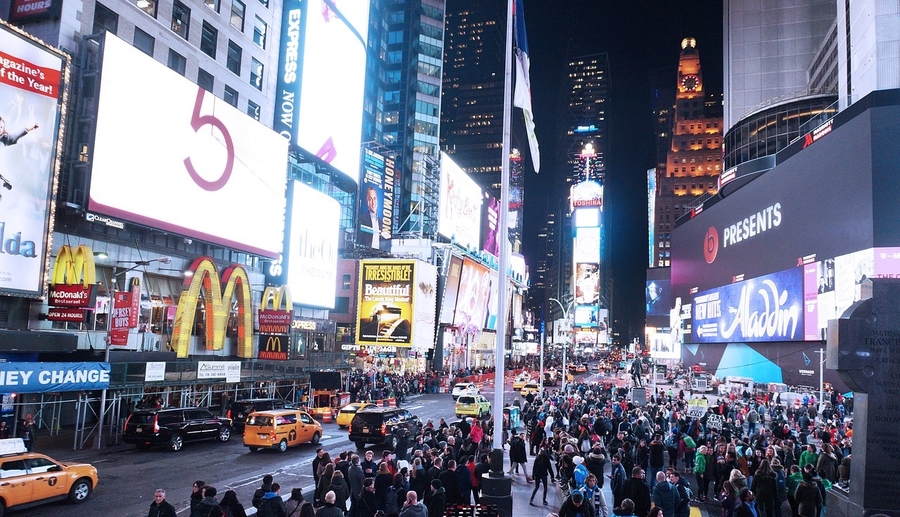How workspaces will need to adapt and change forever.
LOS ANGELES, CA, May 07, 2020 /Neptune100/ — Whispers of workplaces opening up their doors to employees again have been getting louder as of late. Big questions still linger over the heads of companies, but at some point, employees will have to ditch working from their dining table and return to their desk, right? Let’s face it, everyone wants the doors to open again, however, no one wants to be the one who touches the handle. Without widespread testing for the COVID-19 virus, employers across our nation are hesitant to make the controversial decision. As the President and Governors aim to ease restrictions and allow office spaces to operate again, what will change?
How the U.S. will go from a nationwide quarantine to small talk in the common area again will involve some uncertainty. This will surely happen in waves, depending on consumer demand and overall desperation, but the time will come. Employers should be working on a personal action plan to prepare the safest work environment for when they do decide to return employees to the workplace.
Understand that not everyone feels safe returning to their previous work environment. While you may be met with flowers at your feet from some, it’s likely just as many (if not more) boo-birds will be singing loudly. Employers will need to recognize the legitimate perspective of both camps and communicate appropriately to both sides. Remember, the repercussions of this virus are bizarre to everyone and will take unorthodox measures in order to repair.
One of the unfortunate results of COVID-19 is the amount of employees who have been furloughed or laid off. If you plan on getting the band back together again, hone in on the appropriate employees first. This process should be made in a non-discriminatory manner and offered to the best candidates, regardless of their characteristics. Making sure to keep the team on-site as little and nimble as possible is the leading measure to take while companies are looking to get back to work. Remember, things don’t have to change. With many employees working from home over the past few weeks, they might have found to be more productive than expected. As their employer, if you don’t see a decline in their efficiency, giving them the option to continue working from home should go without being mentioned.
Changing or evolving?
If and when employees do come back to work, social distancing should still be practiced in every facility. [Facebook](https://about.fb.com/news/2020/05/coronavirus/), for example, has made a return to the office voluntary and have implemented precautions to keep their content reviewers safe. These protective measures include “greatly reducing building capacity in offices to ensure government guidelines on physical distancing can be observed, implementing strict cleaning protocols and providing personal protective equipment like masks and gloves as well as temperature checks at the beginning of every shift.” [Amazon](https://blog.aboutamazon.com/company-news/amazons-actions-to-help-emp … y-covid-19), on the other hand, is taking parallel initiatives. They have, “distributed personal protective gear, such as masks for employees, and implemented disinfectant spraying and temperature checks across operations worldwide.”
While powerhouse corporations have the resources to carry out daily temperature checks and provide protective gear, smaller businesses can do their best to mimic these measures and ask their employees to wear masks and gloves if they plan on working onsite. There’s a huge possibility this will become the new norm and required in workspaces for quite some time. Investing in protective products and disinfectants such as hand sanitizer and sprays will only be beneficial to your business moving forward.
What do you do when you see an employee you haven’t seen in months? Please, don’t high-five them. It sounds simple, but when Zoom meetings are no more, and virtual reality becomes real-reality, it will be tempting. The [World Health Organization](https://www.who.int/docs/default-source/coronaviruse/getting-workplac … vid-19.pdf) recommends for meetings, “to provide information or a briefing, preferably both orally and in writing, on COVID-19 and the measures that organizers are taking to make this event safe for participants.” Specifically, as an icebreaker, “to practice saying hello without touching.” Introducing the triple-axel-air-five. Just because you can’t tell if your co-worker is smiling since they’re wearing a protective mask, doesn’t mean you can’t laugh and have fun.
What about businesses that will have people walking through their doors who aren’t on company payroll? [Clay Lacy Aviation](https://www.claylacy.com/company/cleancheck-standard/), for example, is going beyond the enhanced decontamination efforts you would expect and asking passengers to “complete a Health and Travel History Declaration before boarding the aircraft,” legally binding passengers to their travel arrangements. The private airline has also suspended the provision of non-disposable utensils and multi-use products during a trip. Miley Cyrus is expected to be a little upset about her nonfat white mocha (no whip) being served in a single-use cup.
Taking a new route
Although employees and employers can control their home environment and workspace, a nagging issue becomes the transportation in between. The massive public transit system in New York City has become a major concern and is keeping many companies from opening their doors to employees. Businesses are seeking alternatives to mass transit and have explored the option to provide shuttle services and private vehicles through services like [Swoop](https://swoopapp.com/). Privately scheduled transportation solely for your team serves as the most effective way to keep your employees safe from exposure. Larger companies are even looking into opening up smaller office spaces in suburban areas for teams to work out of without having to commute long distances. Even larger companies “might offer to subsidize people’s purchases of private vehicles or subsidize rental cars,” said [Lindsay Burke](https://www.wsj.com/articles/biggest-hurdle-to-bringing-people-back-t … 1587992400), Co-Chair of the employment practice at law firm Covington & Burling LLP. Transportation will con @tinue to be a grey area while physical distancing is in place unless you take the appropriate actions to keep your team safe.
What should you do?
The million-dollar question is still on the board. Soon it will legally be okay to open up your workspace for employees, but will this affect your reputation as a business? Employers have a low legal risk, however, rushing employees back to work in an environment that’s in coronavirus limbo can cause irreversible damage to their reputation. Companies that are able to sustain a productive workflow from home may want to extend this method until mass testing and other protective resources become more accessible. Even then, will it be worth the risk? How long until there’s some resemblance of normality in workspaces again? if you’re looking for the final answer, please, phone a friend a let us know what they say.
Swoop is a VC-backed mobility tech company headquartered in Los Angeles. Swoop’s mission is to make group transportation accessible, transparent, and affordable for everyone.
As a managed platform, Swoop provides bus operators with technology and controls all rides to assure an outstanding experience and customer service. The company helps customers to navigate the highly fragmented industry by removing friction and complexity from the current user experience. Multinational clients such as PwC, Google, and Nike value Swoop’s global presence and expertise in logistics for large and complex events.




